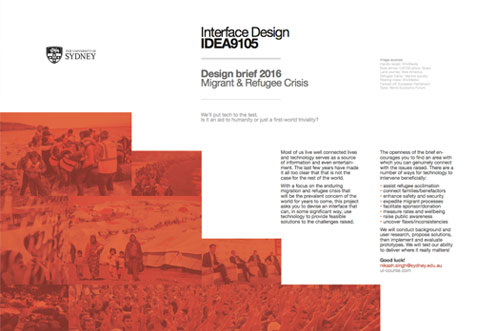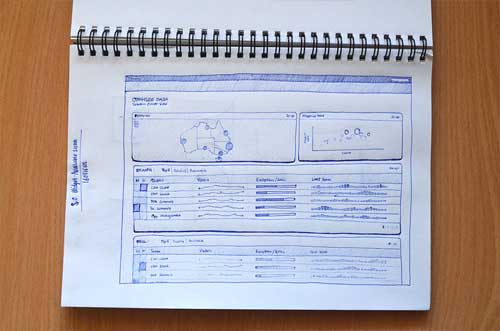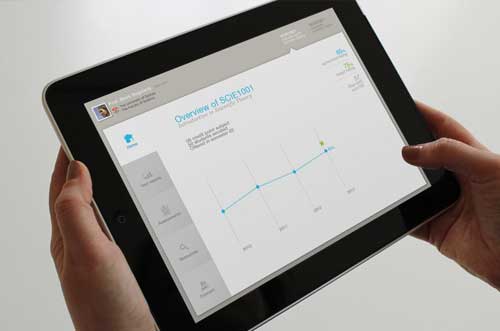Ui Design
Making software that works, simplifies life and delights people
- Keywords:
- accessibility, design, interface, interface engineering, prototyping, usability, UI, user interface, wireframe
- Last updated:
- 2023.01.23
- By:
- Nikash SINGH
User Interface Design is the practice of making software (and hardware) easy to use.
In essence, anything you interact with, should work as you'd expect!
If you've ever been frustrated at your computer then you understand the need for UI Design.
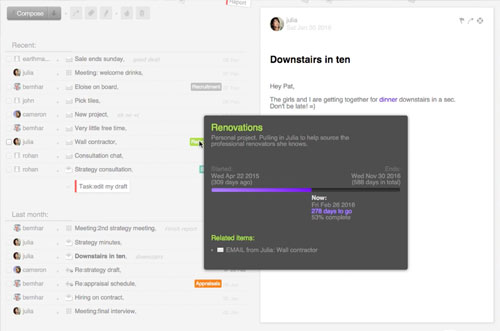
What it isn't
The biggest misconception about User Interface Design — one that persists even today — is the idea that it focuses on the cosmetic appearance of applications, websites, mobile apps etc. Namely their fonts, colours and imagery. For that reason UI is sometimes equated with Graphic or Visual Design. But the visual aspect is misleading — the goal of UI Design is not just to make things beautiful - the goal is to make them usable!
But it is impossible to separate the way a thing looks with the way consumers will reason about what it is and how it works. That's why there is a rich, detailed and complex science to the design of User Interfaces, one which equips UI Designers with an essential understanding of how people think and how appearances can shape their thinking.
“Good interface design doesn’t start with pictures.
Jenifer TIDWELL
It starts with an understanding of people.”
Much to know
User Interface Design began as a deeply technical field emerging from the academic discipline of HCI. It is grounded in theory from behavioural science, visual perception, ethnographic research and data analysis among other areas. From your UI Designer you can expect knowledge of;
Human Computer Interaction theory icon-down
The field of HCI offers decades of understanding about how people interact with computers. Knowledge is adapted from fields like Psychology, Ergonomics and Sociology to provide recommendations on how to build software that is easier to use, more accessible and more enjoyable. So what? A great example of a lesson we take from HCI is the application of FITTS' Law. Given we use pointing devices (such as mice, or styluses) in computing, FITTS' Law offers a formula that indicates the potential difficulty of hitting a target button/link/drop-zone given its size and distance from the current pointer location. In effect, it cautions UI Designers never to make an important actionable item too small to be easily clicked.
Behavioural economics and patternsicon-down
Patterns are applied in UI Design as both literal reusable interface components (like this accordion) and also as more conceptual phenomena of recurring behaviours. This recurrence, predictablitity or reliability gives us an initial basis from which we can anticipate and diagnose common usability problems. So what? A good example of adapting behavioural patterns to UI Design is Herbert SIMON's concept of Satisficing. The Nobel Laureate observed that given a lack of time, patience or information people will often suffice with a suboptimal decision rather than dedicating time to making a more optimal one by consuming further information. UI Designers have implemented this lesson by becoming more vigilant in providing clearer and fewer navigation items and options to users which reduces confusion.
Psychology & interpretation icon-down
In 1988 Donald NORMAN adapted lessons from Psychology targeted toward Designers in his book "The Design of Everyday Things". It marked a turning point for Interaction Design and gave us practitioners an introduction to how the human mind works. So what? A crucial example of interpretation in the field of UI Design is the Mental Model - which is the explanation users form in their mind of how a system works. Knowing this can help Designers correct misperceptions or design solutions that cater to users' assumptions.
“In interacting with the environment, with others, and with the artifacts of technology, people form internal, mental models of themselves and of the things with which they are interacting.”
Donald NORMAN
Social Science research methods icon-down
User Interfaces can fail. Due to this truism, if they can fail they must constantly be tested for failure. UI Designers borrow research methods from the Social Sciences, like observation and diary studies, to better understand how their software fails and what users intentions were during such occurrences. They pair these qualitative inputs with quantitative methods like surveys, tree testing and click analytics to get an objective assessment of the UI's performance. So what? Christian ROHRER recently updated his 2014 research methods matrix for the Nielsen Norman Group, which provides a brilliant overview of the diversity of such methods.
Industrial and Visual Design icon-down
Once an artefact goes from being static to interactive it gains much complexity. Consider the difference between a poster — whose contents can be ingested, and a touchscreen kiosk — whose contents can be navigated. The poster must appeal to our sense of aesthetics and literacy, but the kiosk has the additional concern of accommodating our cognitive fluency, dexterity, technological proficiency and so on. Fields like Industrial Design and Visual Design have navigated the concerns of visual communication, utility and physicality for much longer than UI Design. So what? Affordances (now called "Signifiers") are a perfect example of a concept we share with these domains. Affordances come from Psychology, but they've informed UI Designers to create buttons, forms, maps, devices, kiosks etc in a way that reflects their purpose or function. In much the same way Industrial Designers create tools that are intuitive to grip or packaging that is intuitive to open.
Problem solving
In short, this means that an understanding of composition, colour and typography will not be enough, a UI Designer needs to know how users behave (principles), what conventions (patterns) can be utilised to solve existing problems and what methods (user research) can be employed to understand novel problems. Theory from the above fields are critical because UI Design is an interactive field, that means on top of the concerns of visual perception and communication are bundled the concerns about how people think and behave. While a beautiful product might sell well, a user-friendly product needs to work well long after its initial purchase.
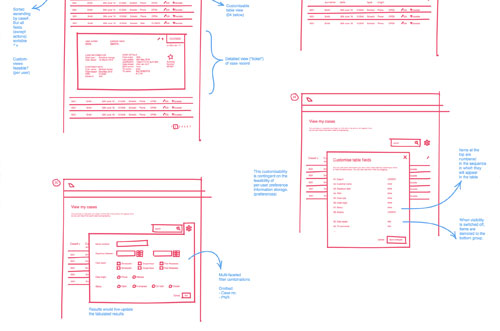
Need UI expertise?
With almost 2 decades of experience, a PhD in the field and as a Lecturer on the topic, I'm comfortable with my ability to help teams navigate tricky UI challenges in demanding professional settings. With more than 30 testimonials to this effect on Linked-in, my results speak for themselves. Please reach out if you need a UI Design specialist to crack a particularly troublesome problem or sensitive project.

